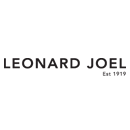









Australian photographic history museum comes to an auction close
Author: Richard Brewster | Posted: 19th March, 2024
It has taken just over 18 months and three sales but Melbourne-based Leski Auctions is finally wrapping up the auctioning of the last cameras left from the windup of Melbourne’s iconic Michael family camera museum.
Part Three – and the final sale – will be held from 10am Tuesday March 26 at 727-729 High Street, Armadale, bringing to a close more than a century of the Michael’s family business involvement with the Victorian capital.
At its height, Michaels Cameras, on the corner of the CBD’s Elizabeth and Lonsdale Streets, housed the world’s largest private camera museum containing more than 3000 items.
Then, when COVID-19 rampaged the world from early 2020 and Melbourne was subject to the longest lockdowns of any city, the business and museum was forced to close.
Although many of the most expensive and rare cameras have already been auctioned at the two previous sales, there are still plenty to interest collectors of photographic history.
One is a circa 1928 Bell & Howell Filmo 75 16mm film camera (lot 59) with a very modest $200-$300 catalogue estimate.
Another is a c1952 Berning Robot Star viewfinder camera (lot 69) and a Robot Royal III model III by the same manufacturer (lot 70). In fact, Berning Robot cameras feature from lots 63 to 75.
Bolex Paillard is another name to watch out for with 1950s movie camera models featured from lots 76 to 78.
A c1941 Canon rangefinder camera (lot 83) is estimated at $5000-$7000, while four early 1960s Carl Zeiss Jena 35mm models are listed at lot 119.
An extremely rare c1913 Contessa Werke reflex box camera (lot 138) is bound to intrigue the genuine collector and, just for laughs, lot 142 offers two c1967 Mick-A-Matic (Mickey Mouse) novelty fixed focus cameras.
Another novelty is the 1979 Franke and Heidecke special edition gold-plated Rollei 35S 35mm compact camera (lot 157) released for the company’s 60th anniversary.
An original 1895 type 1 Pocket Kodak box camera in black pebble-grained leather (lot 211) is a further curiosity and, if collectors are thinking of entering the spy game, an extremely rare Leitz 23mmx13mmx14mm Stanhope microphotograph viewer shaped like a Leica camera (lot 319) might just do the trick.
These were pinned as souvenirs to visitors’ lapels who visited the Leitz exhibit at the first Photokina trade fair in 1950 in Cologne.
Michaels Cameras began in 1916 as a pawnbroker and gunsmith, established by great-grandfather Emanuel, before evolving into a chemist that also sold photographic equipment under his son Harold.
By the late 1970s, Michaels was taking unusual and interesting cameras as trade-ins for newer and more sophisticated equipment.
Harold’s son Alan and grandson Tony then decided to actively conserve, display and expand the evolving collection as a repository of photographic history, given that it had not been adequately preserved in Australia.
The collection was given a major boost when a die-hard German-manufactured Leica camera collector approached Alan to take his entire stock.
The museum was open to national and international enthusiasts, historical societies and curators and became famous for never duplicating its collection, even though differences between models might sometimes have been ever so slight.





